The phenomenon of start-ups is currently omnipresent, companies are founding start-ups, agencies are founding start-ups, craftsmen are founding start-ups, on TV there are special shows for start-ups. Who doesn't sometimes wonder "In der Höhle der Löwen" about some curious founding idea of an ambitious start-up team?

Start-ups - How does a marketing agency support a start-up? (Illustration by Thierry Fousse from Icons8)
Start-ups are young, not yet established companies that pursue two goals. On the one hand, they are founded on a novel business idea, and on the other hand, they want to grow quickly. Startups often go new ways and found in the fields of communication technology, electronic bussiness and life sciences and work with innovative marketing or consulting concepts. They often have the right nose for new trends, simply try something out and thus often pick up new developments and innovative products faster than long-established competitors.
These innovative start-ups set themselves apart from the established business world through product ideas, new services and technologies used, and also differ in their structures and growth plans. Thus, creative start-ups can influence and turn entire industries upside down with their dynamism or even create new markets as a result.
After successfully establishing themselves on the market, start-ups are no longer start-ups in the true sense of the word. However, it often turns out that these companies then continue to rely on their original start-up strengths such as creative freedom, flat hierarchies and high dynamics.
Former startups can also develop into large corporate groups such as Amazon, Google, Zalando, Xing, Facebook, etc.
Start-ups usually finance themselves initially with seed capital and then expand with additional debt capital such as venture capital or fundraising.
Although startups represent only a small part of the overall economic startup cosmos, they have become an important driver of economic development and social progress. They create jobs and help new ideas and innovative technology to break through. Many an industry heavyweight has been challenged by dynamic startups.
Entrepreneurs and start-ups need a bright idea, a strong brand and an effective marketing strategy. Especially in the start-up phase, it is important to have a creative marketing agency at your side that shares your passion for your product.
Often start-ups are already working in a certain industry, from which they develop their own business idea. Or they need a solution to a problem in their personal everyday life and create their business model from it. Or someone who is passionate about traveling, for example, might develop a business idea in the tourism sector. One example here is the Königsbrunn-based start-up OCEAN VAN. The founders are enthusiastic Bulli vacationers. They turned their passion into a profession in 2019 with a campervan rental service.
Once you have found your target project, you have to check whether there is already something similar on the market and how your idea could be implemented in a new and convincing way. Developing a business idea is therefore often a lengthy process that requires your creativity.
What do you want your company to look like? What product or service do you want to offer? Who and where are my potential customers? What does my ideal customer look like? Are there competing products or providers that offer your idea at a lower or higher price? In what area are my innovations? How can I position myself in the market? What should my team look like?
Important in this planning is the financial budget and the possibility of risk-free growth.
The best business model is of no use if it is not tested to see whether it really works. Start-up experts call this measure proof of concept. In line with your product, a marketing campaign should be launched to test whether your business idea will be of interest to your customers. In this way, you can avoid putting a lot of money and heart and soul into your idea, which may become a slow seller.
Your marketing agency will help you develop suitable "test advertising measures". Examples of such test runs are simple websites, ads or marketing surveys in the wider personal environment.
The next step to a successful start-up is the creation of your business plan.
In your business plan, you describe your business idea and its implementation measures in detail. This also includes the preparation of a financial plan with planned income, expenses and your capital requirements. Your business plan is a guide for you and serves as a decision-making aid for your investors.
In many cases, the involvement of a financial advisor is also recommended. In the meantime, there are also professional start-up consultants. Neutral feedback is certainly helpful in the start-up phase.
Start-ups usually live off their investors. And you can only win them over with a convincing presentation. In a pitch, you describe your business idea, your vision, the need for your product, the customer benefits and your capital requirements in a short and concise presentation.
In order to be noticed on the highly competitive market, you need the professional support of a dedicated marketing agency. This way you can concentrate on the core business of your company and leave the advertising in the hands of professionals who know how to establish you on the market. The external appearance of your brand stands for your competence and the quality of your product. Thus, the brand appearance is of utmost importance for the image and success of a young company.
The marketing area includes:
Company logo, corporate design (uniform, coherent overall concept of advertising tools), website, social media presence, online marketing, advertising slogans, flyers, brochures, business cards and much more.
Start-up companies are younger than ten years and are considered innovative in their business model, product/service or technology used. They typically have strong revenue growth and usually a higher number of employees. Start-ups are predominantly team start-ups.
Thus the difference to the classical business start-ups becomes immediately clear. Of the total number of start-ups alone, 80 % are sole proprietor start-ups. Start-ups, on the other hand, already offer an average of 10 jobs when they are founded, compared to solo founders with 0.4 jobs.
In start-ups, the founder and the employees are usually younger. Other differences to traditional companies are the flat hierarchy and rather casual atmosphere, as well as a high level of dynamism. There are hardly any standardized work and business processes and a hardly regulated work environment.
Classic start-ups appear as retailers, craftsmen, freelancers and adopt a frequently used business concept. They are usually not innovative or high-growth.
In addition, they all involve a certain amount of risk, as you are venturing into unfamiliar territory.
A start-up goes through individual development phases, each of which involves special tasks and risks. The financing channels also change in the respective phases.
In the following, we show the typical course of development of a start-up.
In the seed phase, the planning and preparation of the start-up is done. The seed for your start-up is planted.
This phase includes the business idea, the business model, the business plan as well as the product development and the test run.
Startups finance expenses from the seed phase from their own funds. In this early phase, a bank loan is hardly feasible anyway. If outside capital is already needed in this phase, you can either look for business angels or start a crowdfunding campaign.
With the actual founding/business registration of your company, the start-up phase begins. You now have your market-ready product, can build your distribution network and start your marketing.
In this phase, not only the initial investments for product development are incurred, but also the running costs (rent, personnel, ancillary costs). However, your sales increase only slowly in this phase. Therefore you have to keep an eye on your solvency.
In this phase, start-ups often make use of public funding programs (Landesbanken, KfW Bank) or secure equity capital from investors.
In the start-up phase, your company is already up and running. Often, the first employees are hired, the processes run more routinely.
In this phase, a startup gradually gets into the profit zone, the startup has its break-even.
But even if the break-even point has not yet been reached, investors and banks will be more willing to provide financing because your company has already been able to prove itself.
In the growth phase, your company has already established itself in the market. You can attract new target groups, further develop your product and expand your distribution system.
Now the capital requirement will increase significantly. At the same time, the risk decreases because your product has already established itself with a fixed customer base. For the further development of your company, it is important in this phase to be able to raise the increased capital requirements through equity capital, loans or subsidy programs. Unfortunately, little happens without working capital.
If you are then in the 5th phase of your startup story, you have achieved a lot. You are now an established company and are not really a startup anymore. Your profits are stabilizing, growth is settling at a normal level. Planned investments can be financed from the generated revenues.
Startups, however, do well to preserve the basic idea of a startup despite its success.
What does a typical start-up company look like? The foosball table and the coffee bar alone cannot define the common image of a start-up. The core of a start-up is the team of creative, innovative minds, in which there are no strict hierarchical divisions. Short decision-making processes, trust in each team member and a relaxed working atmosphere enable good results.
But is a productive team in a pleasant working environment alone enough to write the success story so familiar to many startups? What is the secret of successful startups that seemingly out of nowhere reshape entire industries?
There is certainly no such thing as "the" recipe for certain success. But some patterns for the successful development of a start-up can already be identified.
If my start-up responds to a particular annoyance that many customers are equally familiar with in their everyday lives, the chances of success are certainly not bad. I don't have to reinvent the wheel; it's often the little things that make everyday life easier.
If an idea doesn't work, it ends up in the trash and an alternative solution is developed.
Then the solutions should be innovative. However, innovative does not mean that innovative technology has to be developed at the same time. One example of this is Robin-Zug from Augsburg. Here, rail passengers can claim compensation for train delays online.
Top start-ups don't work quietly, but are in lively dialog with their target group. What does my customer need? What should the solution to his problem look like? If I don't know the problems, I can't offer a solution.
Successful startups work with a successful team. Investors would rather put their money into a great team with a mediocre idea than into a great idea to be worked out by a mediocre team.
And successful start-ups minimize the financial risk. They stay within their financial budget with their proposed solutions. If that doesn't work, they look for another solution. New ideas, yes, but always within the given budget plan.
One example of a very successful start-up is the Little Lunch Team from Augsburg. In 2015, the two brothers Denis and Daniel presented their idea of a quick, healthy soup for the midday break at the office on Höhle der Löwen. To date, Little Lunch is the most successful start-up on the show.
The basic idea of a start-up is to break new ground with an idea. This offers both an opportunity and a risk. I can open up a new market with my product and thwart the competition. At the same time, however, there is a risk that my product will not be accepted.
That's why it's so important for me to test my business idea for its potential success or failure from the very beginning, and to be able to quickly touch up and correct any problems if necessary.
Start-ups are an indispensable source of impetus for economic development. With their innovations, they pave the way for new technologies and also increase competitiveness. That is why the government supports the start-up scene with many measures and programs. For example, low-interest loans are available from KfW Bank.
But the individual federal states also offer a wide variety of funding programs.
Founders can obtain information and advice on the individual measures via founders' platforms.
Founding a start-up is a chance to bring your creativity to life in a project. With a cool idea, careful planning and a motivated team, your start-up can also become successful.
Should I or shouldn't I? Young entrepreneurs cannot be relieved of this question. It is not easy to weigh up the opportunities and risks.
Currently, more than half of all start-ups give up again within the first 5 years after founding a new company. This is often due to poor customer acquisition and retention.
However, this risk can be minimized - through good marketing. Get advice and support from a dedicated marketing agency. Above all, the advertising measures must not slacken after the first successes. Those who do not advertise die, as has unfortunately been proven many times.
Many agencies offer interesting price packages, especially for start-ups. This investment always pays off.
A start-up must fit you and your life situation. Look for a business model that suits you. You can work with a team or you can outsource the fields of work that you are not comfortable with. You don't have to be young or hip to make your business idea work. You need to have the desire to develop and implement your ideas.
In any case, we as a dedicated advertising agency are happy to start with you!
A perfectly told brand story is the key to the heart of your customers. Your story must be exciting and gripping so that it appeals to your target group. Boring and meaningless buzzwords no longer attract anyone in today's stimulus-flooded Internet. Customers must feel addressed so that they can identify with the core message of your company.
Directly translated, brand story means brand history. However, this does not do justice to the actual meaning of brand story. You shouldn't just list the dates of your company's history. It may be interesting that your great-grandfather started the company from nothing under adverse circumstances. But that's only a small part of a brand story. It is the story of values and identity, of visions and the core message of your company.. This will help you breathe life into your brand, highlight its benefits, and connect with customers.
A brand story is more than a business presentation, a brochure or a slogan of an advertising campaign. A brand story is not only what you tell about yourself, but what your customers think and communicate about you and your brand.
It's not just your brand story. Above all, it's also the story of your customers.
And a Brand Story has no end. It will continue to be told as long as your company is on the market. A good brand story should also not be a sprint, but should be set up for the long term.
We are bombarded with countless advertising slogans every day. Whether on the radio or television, in magazines or on posters, we even encounter advertising banners and ads on websites. And especially in social media, we encounter direct or indirect advertising messages. We are exposed to an estimated 3,000 commercial messages every day, the majority of which we are not even aware of.
And this is where the importance of storytelling becomes clear.
It's much more effective and sustainable to draw customers to your product with a meaningful story than with trite advertising slogans.
A good story arouses interest and touches, makes the customer aware of you and your products. The connection of information and Emotion is one of the strongest Means of communication. A good story stays in the memory and conveys a feeling of connection. This is how you can build trust and customer loyalty
Without a brand story, it will be difficult for you in the competitive marketplace. Unfortunately, it is not necessarily the better products or services that are chosen today, but those that are communicated and advertised in a promotionally effective manner. The focus is on how a product makes us happier, more successful, healthier. How can I solve a particular problem quickly? That's what the consumer is interested in. He wants these questions answered on your website, your brochure or your Instagram campaign. Of course, that works easier with an informative, compelling brand story. So storytelling is becoming increasingly important in marketing.

The brand story is the unique, exciting story behind the brand. It can become the key to the heart of yours! (Illustration by Thierry Fousse from Icons8)
A brand story includes the story about your brand's creation, values and vision. It focuses on emotions, facts, and insights; you describe who you are, what you do, and what drives you. You want your brand to stand out from the competition and be memorable in the minds of your target audience.
You should address the following questions when creating your brand story: What? When? Why? How? Who? What for?
You don't have to proceed chronologically either. The most important thing is that you Focus on the unique selling proposition of your product or service place.
The 1st step in writing your story must be to answer the question of why you do what you do. Why does your business exist? What motivated you to start your business? What is the passion behind what you do? What is your brand's aspiration for itself? Who or what inspired and motivated you? What individual beliefs are in your product? What sets you apart from other competitors? Think about the story behind it - Why does your business exist?
A brand story that doesn't connect with your product doesn't sell either. You can't sell a BMW in the same way as a FIAT, they both have different quality, prices and ultimately different target groups.
So you need to ask yourself the following questions: What is the quality of my product? What distinguishes my product from that of the competition? What are my product's competitors? What are the strengths of my product? Does my product solve a problem? What emotion does my product trigger in my customers? Why should a customer buy my product?
Your target audience is one of the most important parts of your story. Your brand is not the hero of your story, your customer is.. Without your customers, there is no story, because without customers, your business makes no sense.
A successful example here is the story of a plumbing company. On the company's website, there is a short story for each service area. For example, it describes the project of an elderly lady who wanted to realize her dream bathroom and had some very special requests. This presented the craftsmen with some problems, but in the end the customer's ideas could be implemented. In the story of the company it became clear that the uppermost maxim must be that the customers feel well and their still so unusual desires are also to be realized. This builds trust with the customer, who is happy to entrust the plumbing company.
So you have to get to grips with who your target group is. What wishes and demands do your customers have? What problems do they have? How can you support your target group? Which points in the story can appeal to your customers emotionally?
Define your target group exactly. You can't and don't have to appeal to everyone! If you have defined your target group exactly, it is also easier for you to write your brand story.
Every company has its very own corporate story, whether it's a traditional family business or a young start-up. An exciting brand story is important for everyone, as it shows the personality and trustworthiness of a brand. Studies show that, especially in today's advertising overloaded times, customers do not simply consume a brand, but want to identify with it on a personal level.
Most customers wouldn't care if up to three quarters of all brands disappeared from the market. So it's vital that your brand has an individual, personal character that your customers can identify with. Because these customers would care if your brand disappeared from the scene. Advertising campaigns must therefore become more customer-oriented. The preferences of the target group must be taken into account to a greater extent.
One example of a successful brand story is the Hornbach campaign. Here, it is not a boring DIY store that presents itself. Hornbach conveys an attitude to life and is a partner in the realization of sometimes somewhat idiosyncratic construction projects.
Or let's look at the story of Fritz-Kola. Two students started their project with a simple idea and a limited budget. Today, Fritz-Kola is a cult product. The story also tells about the setbacks of the founders as well as funny incidents during the development of the logo. Today, Fritz-Kola conveys the lifestyle feeling of a young, hip community.
It's your story. Tell it about yourself and stay true to your motivations. And stay authentic! Your story may seem unspectacular to you. But you don't have to suck the material for the next Blog Buster out of your fingers.
A clear, structured narrative style is essential for a gripping brand story. It is often easier to write the story according to the familiar model of introduction, body, conclusion. Figurative language with colorful examples also makes it easier to read the story. Your brand story should share your passion about your product with the target audience. This will automatically trigger the desire for the product you want to sell.
It is important that you align your communication with the language of your target group. A younger clientele responds to different content and a different communication style than an older audience. There are also differences between men and women. Your target group analysis allows you to determine the language style, narrative style and content of your brand story.
It also does no good to adapt the communication to the brand story only in parts. Inconsistent communication looks unprofessional and leads to a loss of trust. Therefore, update all communication tools.
Questions in this area would be: What emotions do you want to evoke in your customers? Do you want to tell your story in the 1st, 2nd or 3rd person? Should a formal or colloquial tone prevail in your story? On which channels do you want to communicate with your customers (social media, website, Instagram, brand video, blog post, e-book, infographic)?
Consistency, or successfully staying in the market, is a challenge for both small and well-known companies. New companies must first establish their brand story in the competitive market, while well-known brands strive to continue their brand story consistently. Only a well thought-out story can trigger emotions and thus guarantee a lasting bond between brand and customer.
Nivea provides an example of a brand story that has been successful for years. The advertising campaign "Danke Mama," "Danke Papa" and "Ein Teil von dir" was exemplary for the close relationship between parent and child. Consumers felt a deep connection with the product without Nivea advertising it directly.
Behind every brand is a great story worth telling and then reading.
Start working on your very own brand story now!
Image: Photo by Emre Kuzu from Pexels
What actually is a brand identity? The Brand identity expresses, what a brand stands for. You describes the core your brand from your point of view as the brand owner. You use it to describe all the features that make your company special and unique and set it apart from the competition.
The brand identity represents the cornerstone of every successful brand and shows which image is to be represented. Building a brand identity is therefore a fundamental factor for a long-lasting brand positioning in the competitive market. Your targeted customer group will associate your brand identity with your offering, build a connection and ultimately generate satisfied repeat customers.
Why are certain brands so successful? They are based on a clearly aligned identity, create a positive external impact and identification, which makes long-term customer loyalty possible.
And that Design your brand identity? This gives shape to your business.
How do you design a strong brand identity, what steps are necessary?
Your brand identity makes you unmistakable and instantly recognizable to your customers. Your product or service is associated with the positive image you show of your company.
But to achieve a certain image among customers, of course, requires some work.

Brand identity - What does your brand stand for? (Illustration by Dmitry Nikulnikov from Icons8)
Design includes your logo, your web design, your graphics, your packaging, your social media presence, your business cards, or even your employees' work clothes. If your design fits, then your brand identity also represents the statements and content that are important to you as an entrepreneur.
You should work with a designer or agency to bring your brand identity to life. Together, you can then transform your brand into concrete design content that you can use to launch your marketing campaign. Which design elements are important then also depends on the nature of your company or product. For example, as a design agency, we need to focus more on our web presence, while a restaurant, for example, is more concerned about premises or the menu.
Your logo is a central part of the brand identity and therefore very important. A logo is comparable to a face. We recognize people by their face and use it to draw conclusions about the personality of our counterpart. And ultimately, it is the face that gives us a first impression of whether we find someone pleasant and nice or unsympathetic and threatening. Your logo should stand as an image for your brand's values and content, focusing on a core message. It is also important that it visually appealing must be and yet should be simple and clear design. It must also not be too fancy. Otherwise it might be out again in a few months. Ultimately, it has to resonate with your customers and leave a lasting impression.
Without a well-structured and functioning website, it is no longer possible. Almost all customers find out about you and your offer in advance via your Internet presence. So you have to make full use of this tool.
Especially in the area of product packaging, design is often the key to success. And that applies to everything from the look of a coffee package to the shopping bag to the design of an appealing customer email. This enhances the shopping experience of your target audience and that keeps them coming back to you. The design possibilities of business cards or workwear could also be mentioned here.
A strategic brand analysis examines all the essential building blocks of a brand. What makes my product/service special, how can I differentiate myself from the competition? This analysis also focuses on the target group. I look at my customers (trends, consumer behavior), my competitors (image and strategies) and my own strengths and weaknesses in order to use the results to align my brand identity more efficiently.
An effective brand identity must generate trust and sympathy among consumers. Brands that deliver what they promise are well received. This then also has an effect on their recognition value. What gives you wings? Who wouldn't know the answer? Red Bull has consistently shown in its entire advertising spectrum that this energy drink makes you fit and strong. The result is a positive and stable brand image.
But it doesn't always have to be a global corporation that you can take as an example. Let's take the restaurant from Schwabmünchen for instance Germar's Best Burger and Pizza. In a very short time, this restaurant, which has now become an insider tip, has made a name for itself. A target group-oriented logo and fresh design have contributed to the successful brand identity, which has been consistently applied to the menu, the design of the premises and façade, the clothing of the service staff and the vehicle livery of the delivery service. This is rounded off with a tasty website - in the spirit of the delicious burgers.
Or let's look at the V.M.P Vermögensmanagement GmbH with the motto "Fair always comes first!" from Neusäß. The website and social media channels give clients a positive image of a dedicated and competent team that gives 100 % for its clients. Expertise, commitment and success are reflected in the rapidly growing client base.
Your brand identity should highlight your unique selling proposition, strengths and advantages. It should make you competitive and successful in a highly competitive market. Your customers should know who you are and what you can offer them. For you, your brand identity is your flagship, for your customers it is a decision criterion.
Image: Photo by Min An from Pexels
Branding describes the active shaping of a brand into a company's own identity and a strong figurehead. The customer recognizes the brand and associates positive characteristics with it. The aim of branding is to distinguish the company's own products and services from those of its competitors. A positive image of a strong brand is to be created with concrete messages and emotions. The customer should subconsciously recall certain associations when he comes into contact with the brand.
So branding is more than just a logo or logotype. Branding describes the gut feeling that arises in the customer.
Examples of very successful branding are the popular Ritter Sport chocolate with its image of practical, square, good. Or the global company Apple with its bitten apple, which stands for high-quality high-end products. And the Swedish company IKEA is another example of perfect corporate branding. Ikea stands for young furniture at reasonable prices and a family atmosphere. This branding gave IKEA a monopoly position in the German furniture market.
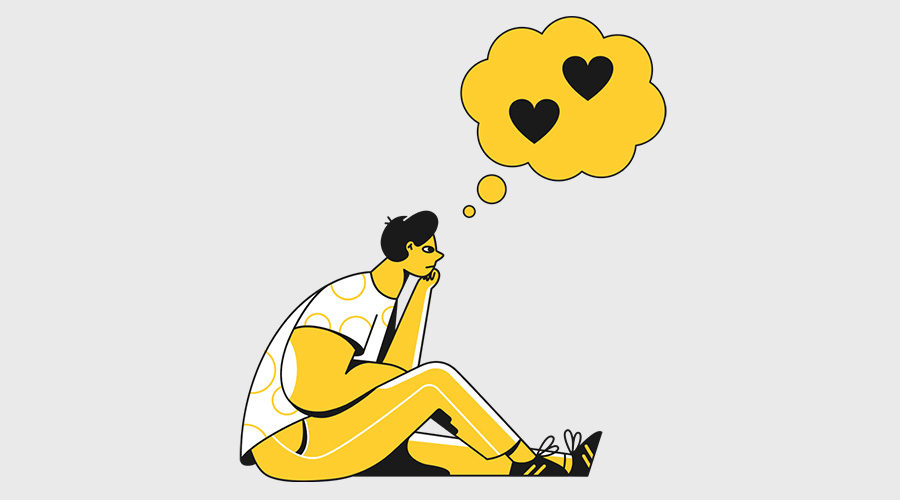
Branding for companies: What story is being told? (Illustration by Maria Shukshina from Icons8)
Do I even need branding for my company? - We can answer that with a clear Yes Answer. Your company needs branding to draw attention to itself and not to be eaten by the competition in the big shark tank.
Through branding, you win new customers and also turn them into loyal customers and fans of your brand. Branding builds your brand, makes it known, and ultimately makes it successful in the long run.
Branding consists of various elements that need to be worked out, whether by you alone or with the help of an agency geared towards this. Below are some sample elements.
Your company's vision represents the goals and motivations that keep you back in your workshop or sitting at your desk every day. Make a short statement about what your company is about, what it should stand for. Think about who you want your customer to be. (Mission Statement)
Your brand strategy encompasses your corporate goals and visions, your unique selling proposition that sets you apart from the competition. It may also include new ways of doing things. It also includes ideas for advertising campaigns, as well as your external appearance, which should be consistent across all platforms. (brand guidelines)
In a way, your logo is the face of your company. Accordingly, the creativity and care in its design should be great.
Your website is the digital home of your company. This makes your web presence all the more important. Your website should be appealing and easy to use. Visitors should feel comfortable and stay as long as possible in your virtual business. Today, a good website is one of the most important building blocks on the way to lasting success. (One reason why we put so much heart and soul into the design of our clients' websites!)
Depending on the industry, this category may still include items such as flyers, advertising brochures, customer magazines or product packaging.
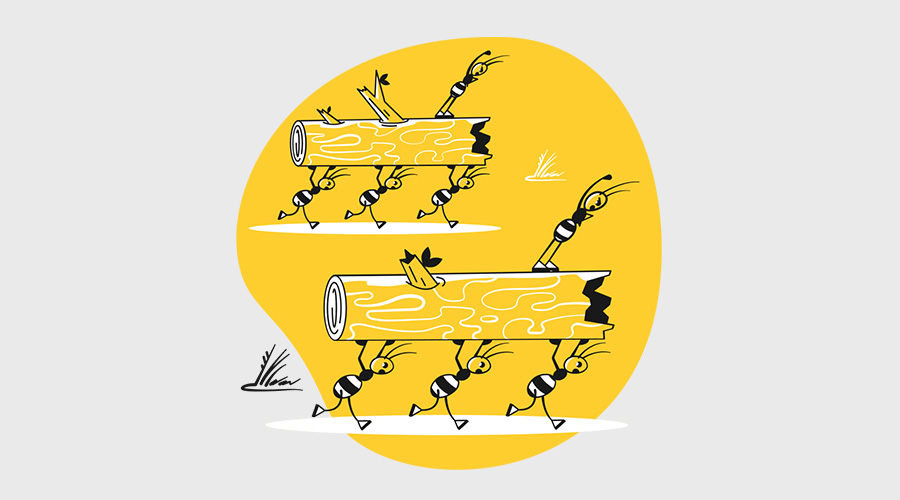
It's the whole that counts: Branding consists of many components (Illustration by Ivan Haidutski from Icons8)
This question about the Costs actually cannot be answered unequivocally. First, you have to focus on the question: What goals do you want to achieve with branding? And derived from that: What would it cost you not to achieve these goals?
We help you develop your brand strategy and then also help you create a budget plan. All-inclusive offers are not target-oriented in this area and can therefore not be considered serious.
Often, smaller businesses are afraid of the excessive costs that might be incurred when booking a branding agency. But successful branding exists for every
Budget. A good agency will work with you to develop your branding guidelines that not only meet your goal, but also your budget.
What characterizes good branding? The core objective of good branding must be, bring the brand to life and give it a personality of its own. So just presenting a fancy package on a visually appealing website can't be it.
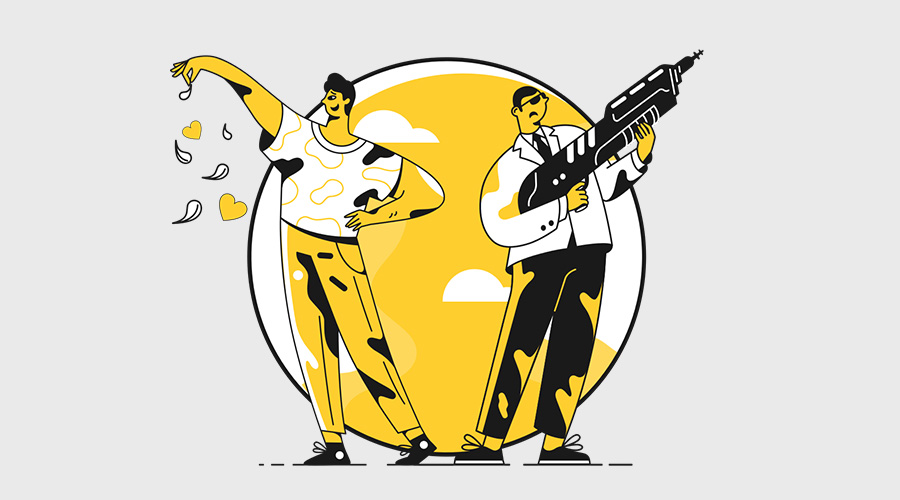
Good vs bad branding: does it even exist? (Illustration by Dmitry Nikulnikov from Icons8)
Brand guidelines are also always central to good branding. A consistently well thought-out and consistent Appearance is a priority here.
Poor branding is often due to the fact that company founders pay too little attention to the external appearance of their brand. When starting a business, you often lack the know-how or the capital for professional consultants, designers and marketers. It does not convey a positive brand image if, for example, different fonts, language styles or colors are used on the website than on your otherwise existing social media channels. Inconsistent branding reflects poorly on your overall brand presence.
This article might also interest you: What is the difference between brand, branding and brand identity?
In the field of marketing, one encounters many buzzwords about whose exact content one is often not at all sure. Today we dedicate ourselves to the terms Brand, Branding and Brand identity. What's the difference between the terms and how can you use this knowledge to build a successful business?
A brand is defined by the image your customers have of your company. The brand is not simply a logo or sign that distinguishes it from similar products. Rather, it is what customers tell each other about a company (see also Brand Story). All experiences and impressions merge into a unique idea. A strong brand creates trust and thus a long-term relationship. I can identify with a brand because I know what I can expect from it.
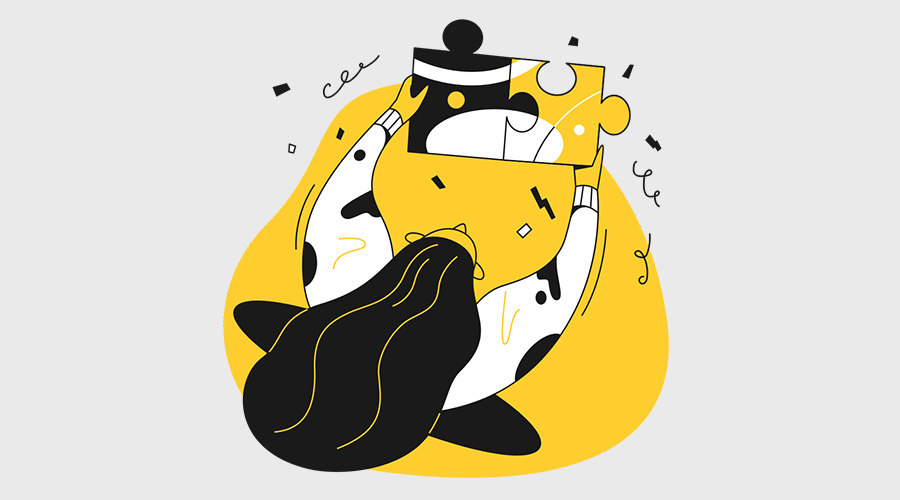
Brand is the totality of all associated stories & emotions. (Illustration by Ivan Haidutski from Icons8)
So in a way, the brand reflects the personality of a company. It encompasses the way a company is perceived by people and what associations customers make with your company.
Branding describes the measures and actions that a company takes to create a certain image and differentiate itself from the competition. Branding thus describes the active shaping of your brand, the strategic control of the desired external perception. The goal is to define who you are as a company. You show what makes your company, your brand, what sets you apart from the competition. Branding thus supports the establishment of your brand identity.

Branding includes measures for long-term customer loyalty (Illustration by Aleksey Chizhikov from Icons8).
Through marketing, you establish a relationship with your customers and convince them of your products or services. With branding, however, you ensure that these customers stay with you in the long term. Branding includes all measures to establish a brand. It starts with the vision and follows the long path through brand voice and brand story to the final brand personality.
Branding is recommended for every company and every person who wants to make themselves known and position themselves in the competition. If a company wants to distinguish itself to the outside world, it must know what makes it special, what sets it apart from others.
Let's take the Jack Wolfskin brand as an example. With the slogan "At home outdoors," the brand conveyed freedom and resilience, and not just on a hiking trip, but also on a rainy stroll through town. So a very broad group of consumers felt addressed, Jack Wolfskin became the partner for all outdoor activities.
If you want to build a business, branding comes before marketing. Why? You can't market a brand if it hasn't been designed yet. Who are you as a brand? What is important to you? Who do you want to appeal to? How do you want to be perceived by your potential customers?
Once these questions have been clarified, the marketing measures can be tackled.
Brand identity is the self-image of a brand. All the special characteristics that distinguish a product or service from similar products describe the Brand identity. Various concrete brand elements create a brand image and thus ultimately the brand identity.
The brand stands for the logo, the company name, the orientation of the company. The identity stands for the unique selling proposition that positively distinguishes you from your competitors. A company thereby creates the desired, "right" image of itself with the customer.
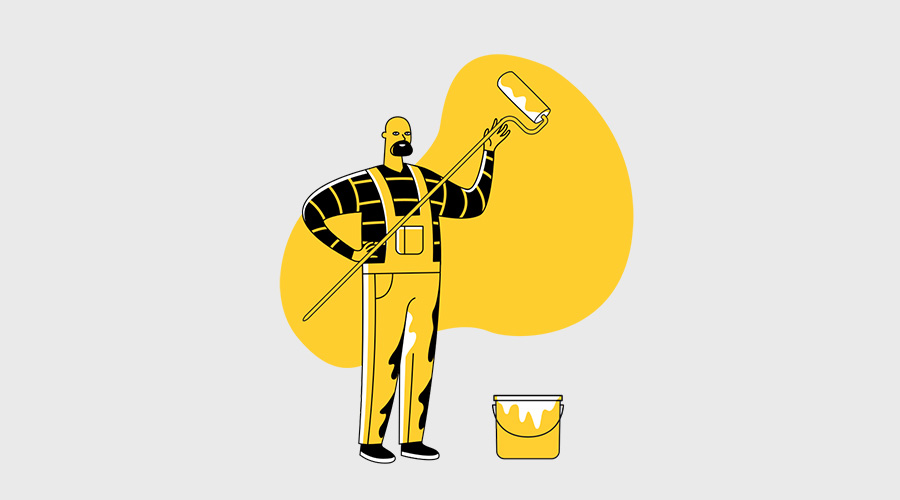
Brand elements create a brand image and ensure recognition (Illustration by Natasha Remarchuk from Icons8).
The more distinctive and expressive elements such as logo, typography, language, slogans are, the greater the chance that a brand will be formed, recognized and accepted by the consumer.
Let's take the familiar blue cream can as an example. Nivea stands for trust and consistency and has therefore hardly changed its visual appearance for decades. This traditional company has managed to evoke clear emotions and establish a stable brand image with an effectively communicated brand identity.
Your brand identity makes you unmistakable to your customers. Your customers will associate your company with your product or service. This creates long-term customer loyalty. Brand identity is becoming increasingly important, especially in the service sector.
In order to be able to establish your brand identity, you first have to find out for yourself what makes you and your product or your company special. In a brainstorming session, you should define why you started your company, what your values and goals are, what makes your product special, or what your team does better than any other competitor. Describe your brand in three words. All of these answers will define your brand and help you on the path to your successful brand identity.
Marketing can be used to gain the attention of customers. Branding can then maintain this in the long term. Branding creates customer loyalty and strengthens brand recognition. Marketing strategies change (meaningfully), branding remains. You can think of marketing as short sprints, while branding is like running a marathon.
Without marketing measures, it is difficult to survive in today's highly competitive market, regardless of the industry. You need the right marketing strategies to stand out from the crowd and attract new customers. But you also need branding to build long-term customer loyalty. After all, you want your customers to stay with you and your company.
For entrepreneurial success, you need marketing and branding. The brand identity is the figurehead of your company. It is an important decision criterion for your target group.
Sebastian Lochbronner
86830 Schwabmünchen
Germany